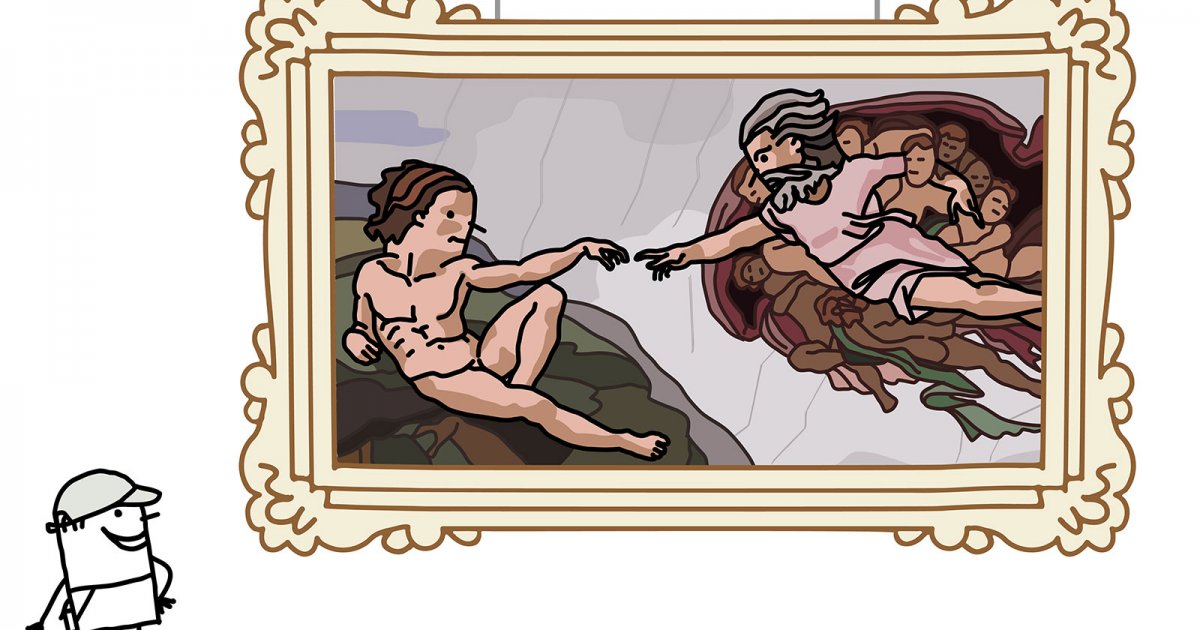SISTINE CHAPEL, Vault - Scenes
 Language: English / USA
Language: English / USA
After having built the scaffolding to work from, Michelangelo began painting in July of 1508; he ran into a few problems because he didn't have much experience painting using the fresco technique. Some painters from Florence worked alongside him: you can recognize their work in some parts of The Great Flood and The Inebriation and Sacrifice of Noah. Yet soon thereafter he dismissed all the assistants except for a few who were left to help with elementary tasks such as mixing colors, and Michelangelo continued uninterrupted until August 15th, when the work was about halfway done.
Michelangelo had to trace the drawings he had made on preparatory cartoons using the "spolvere", or etching, technique on the curved surface of the vaulted ceiling; but the lunettes above the windows had a flat surface that let him work more easily: he simply drew the figures' outlines directly on the wall and proceeded at an incredible speed, taking an incredible three days for each lunette!
Then the work was interrupted for a year because the pope left Rome to go fight against the French. On August 15th, 1511, the first part of the vault was uncovered for the Feast of the Assumption. The scaffolding was then rebuilt under the other side of the vault, and the work was completed in October of 1512, for a total of four years!
You'll notice that the three Stories of Noah that were painted first are very complex and full of figures, while already in The Temptation and Expulsion and The Creation of Eve, his painting becomes more synthetic and powerful: the size of the figures' bodies increases, their gestures are simplified, and the backgrounds are less important.
Michelangelo carefully studied the frescoes from below, and then further accentuated the terrific energy and grandeur of his images. Stop for a few minutes to admire the famous scene of the Creation of Adam, which is the most moving point of the entire ceiling. In an eternal moment, suspended in emptiness, God infuses life into a being created in his image and likeness. Adam slowly lifts his strong, agile body while lying on the slope of a hill: his still uncertain finger reaches towards God's steadfastness, in a mute exchange of glances, wills, and power.
FUN FACT: for Michelangelo, the Sistine Chapel was exhausting, torturous work; during the four years he passed standing on the uncomfortable scaffolding, he was forced into a position that caused him several illnesses including arthritis, scoliosis, and severe eye irritation due to the paint dripping right onto his face.



